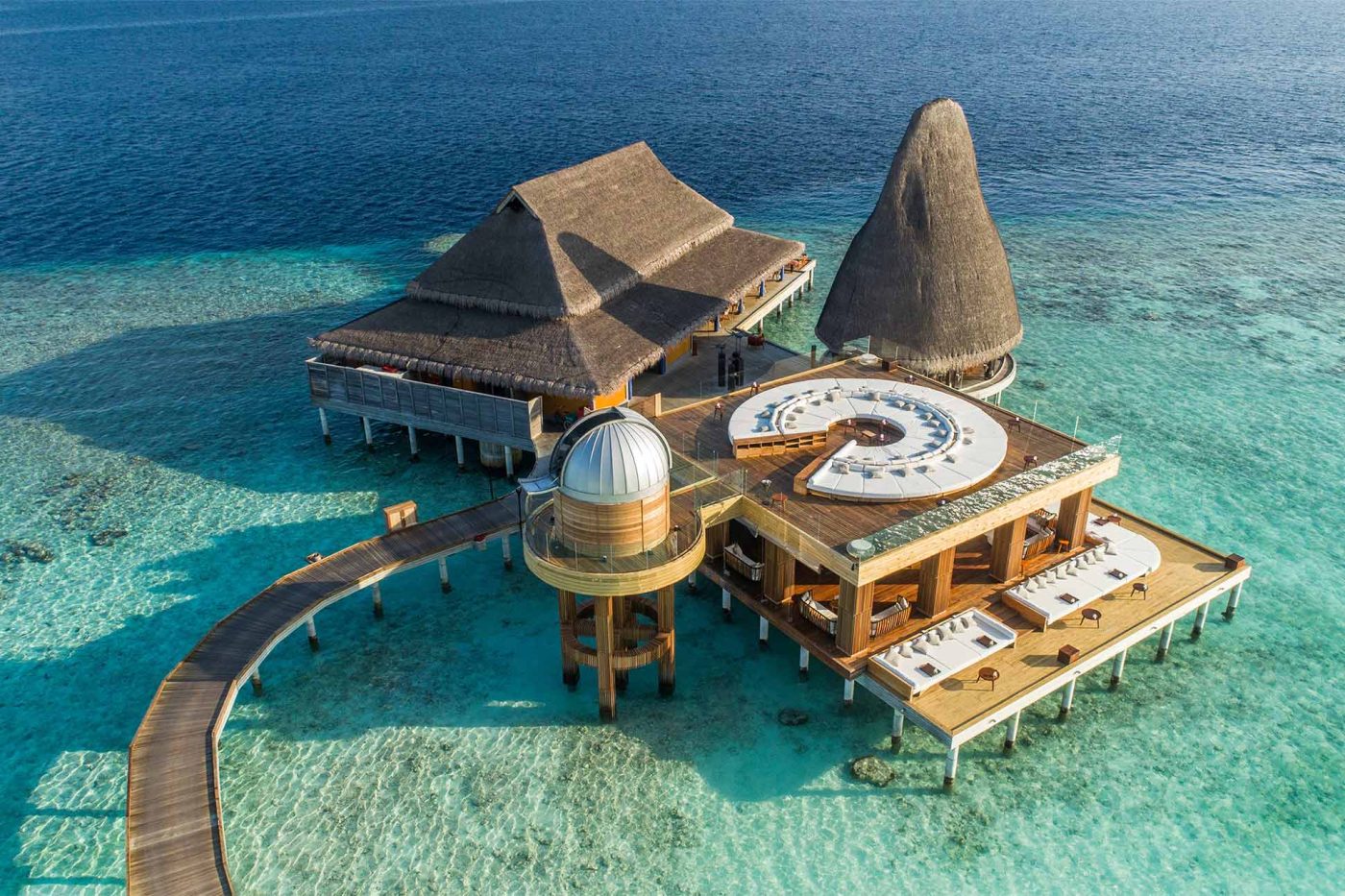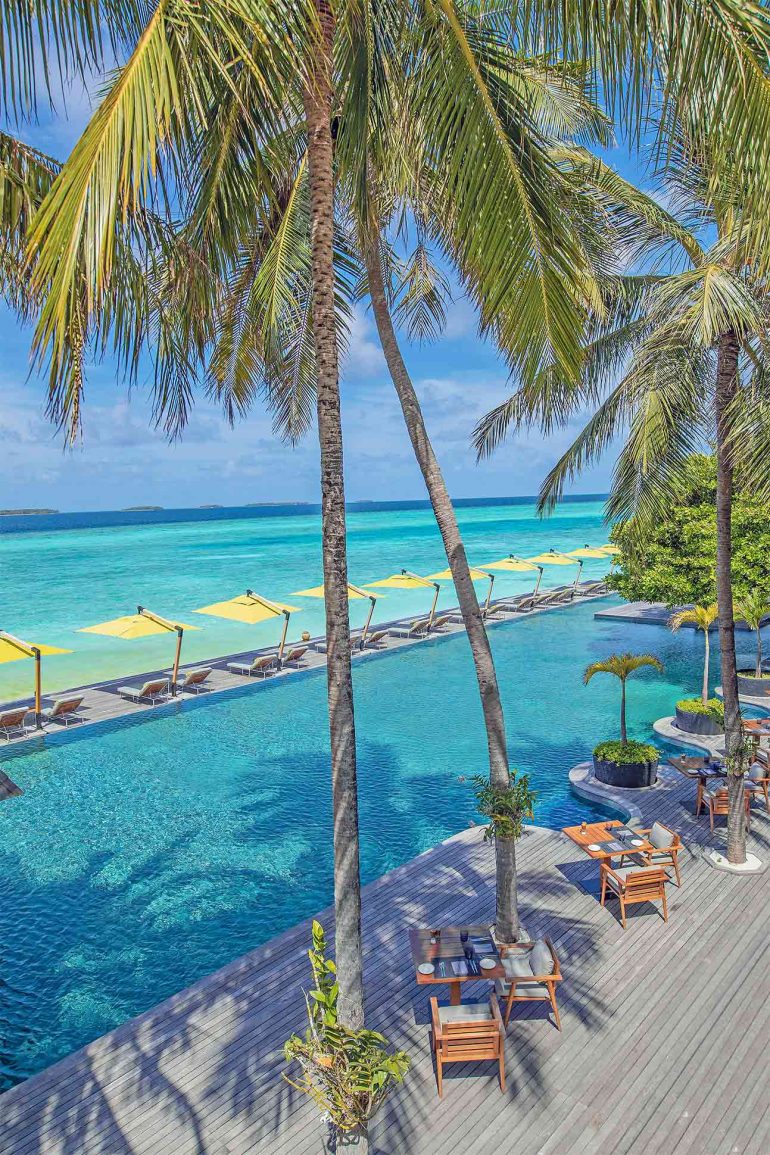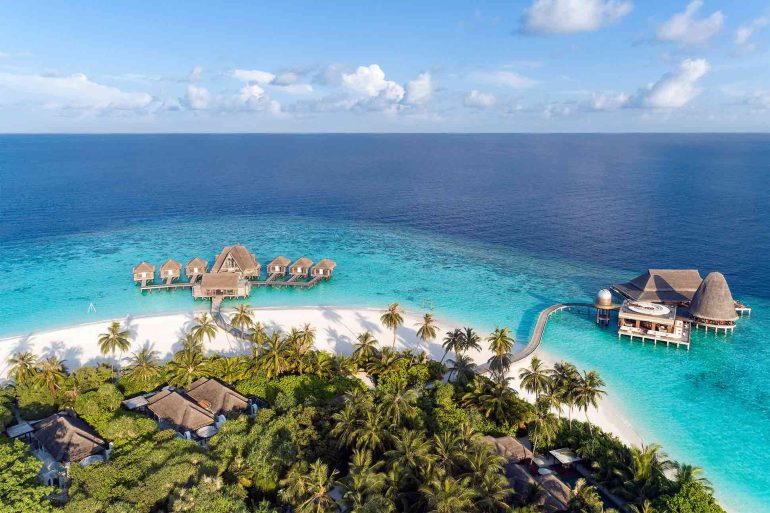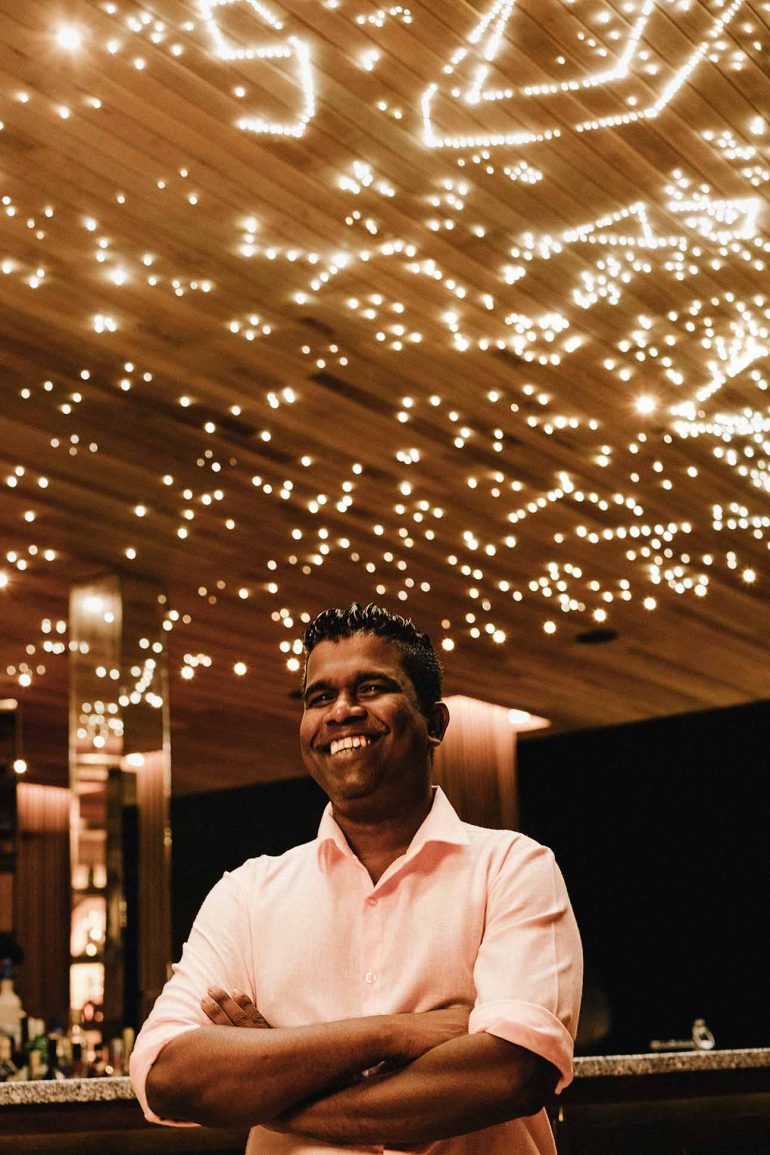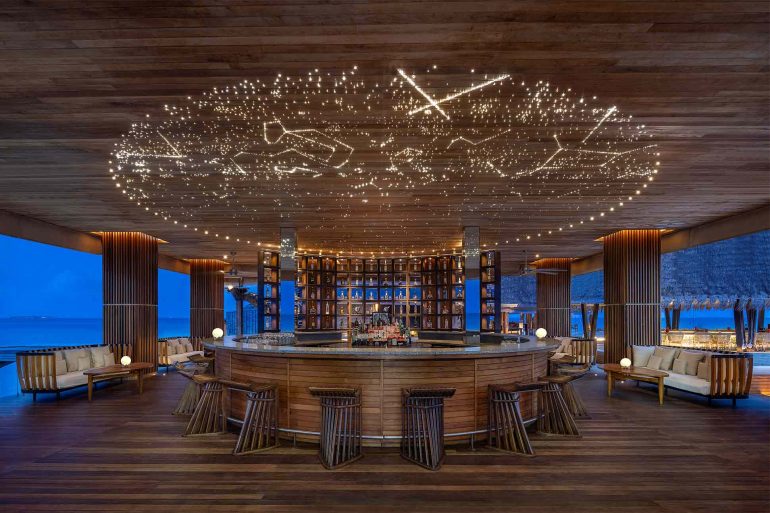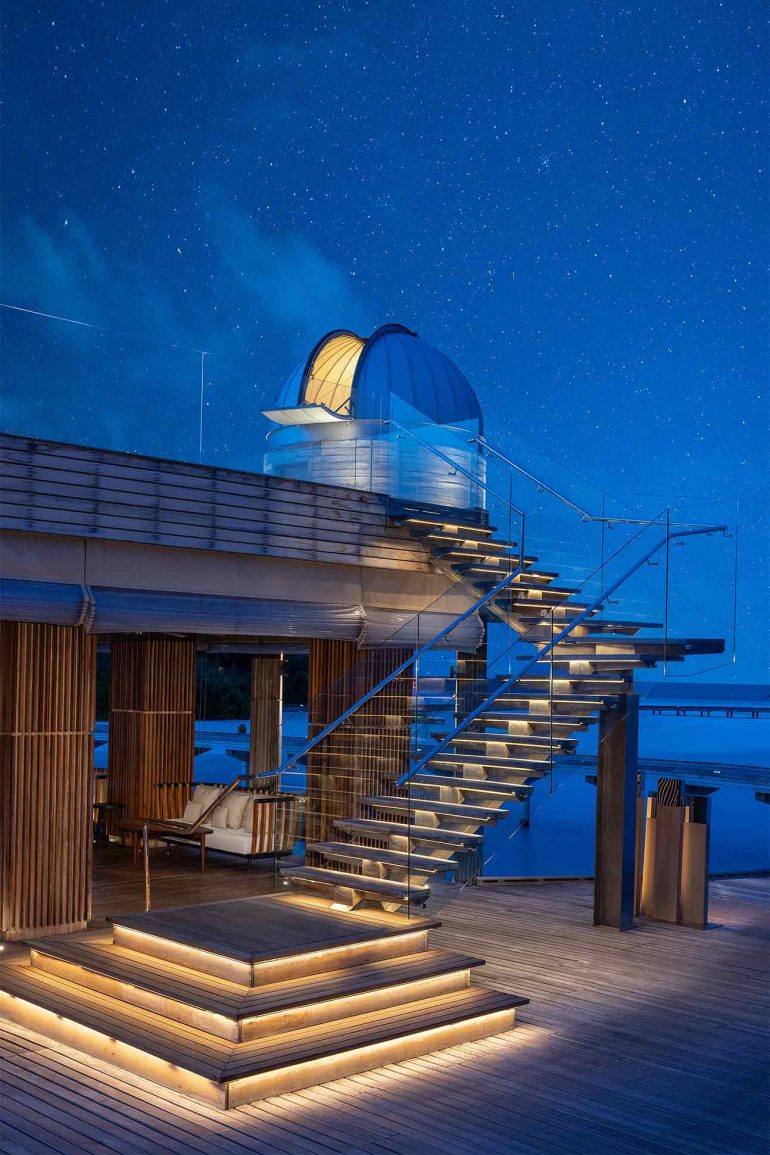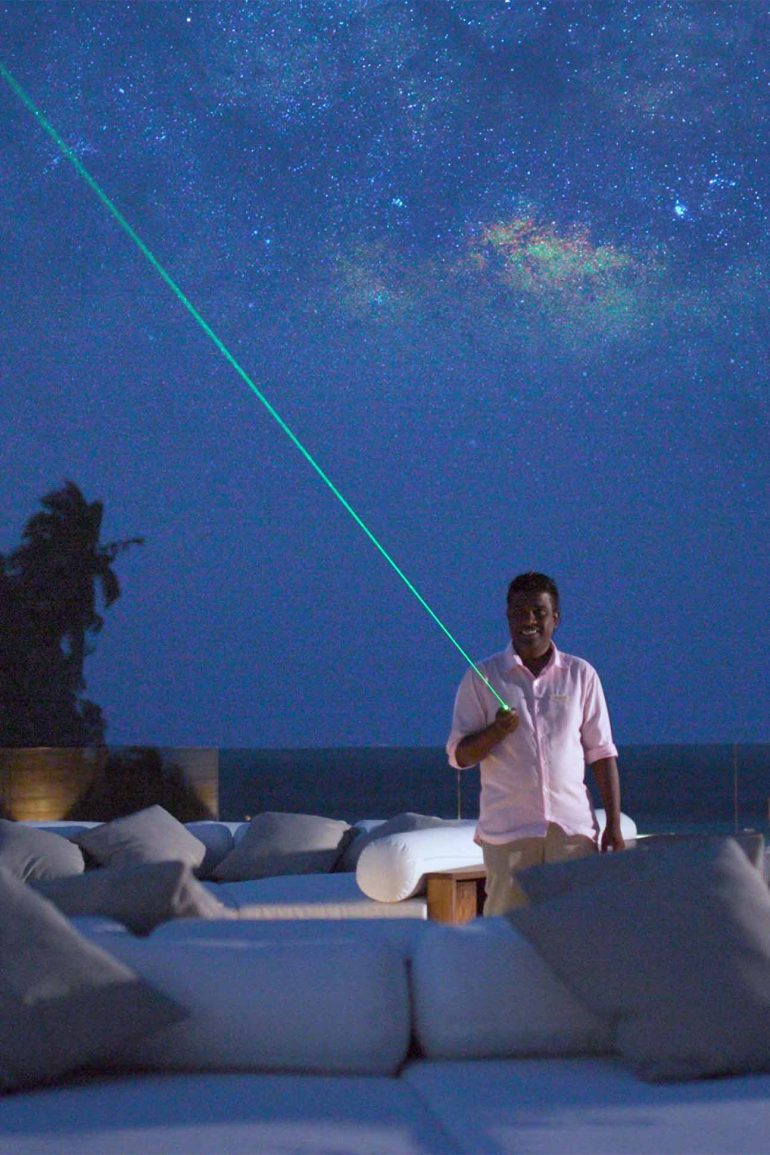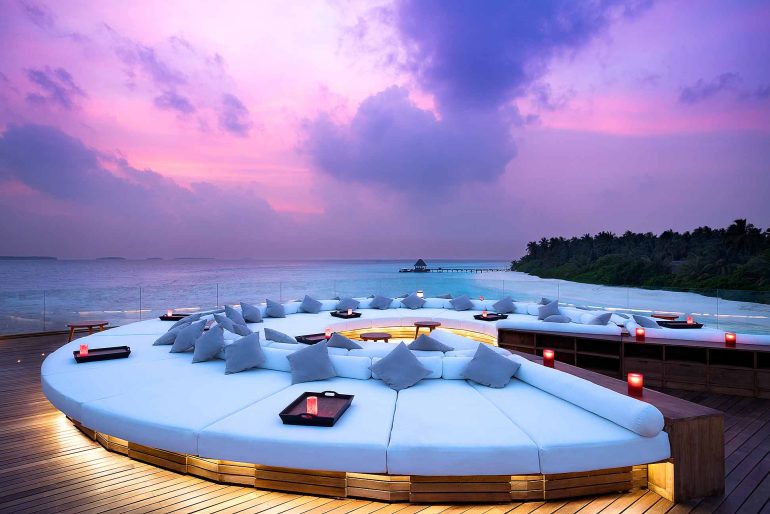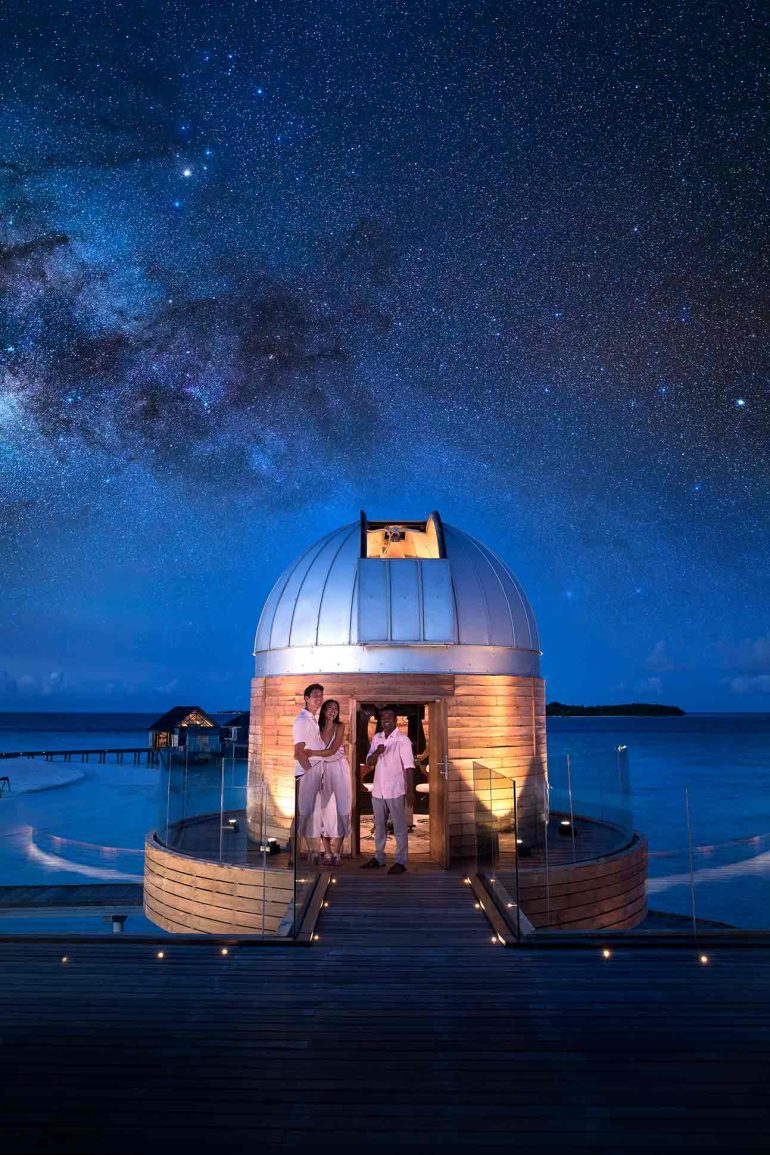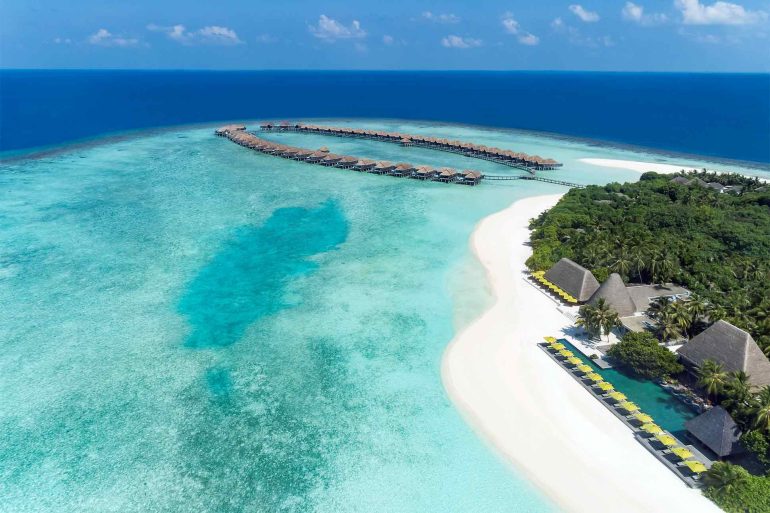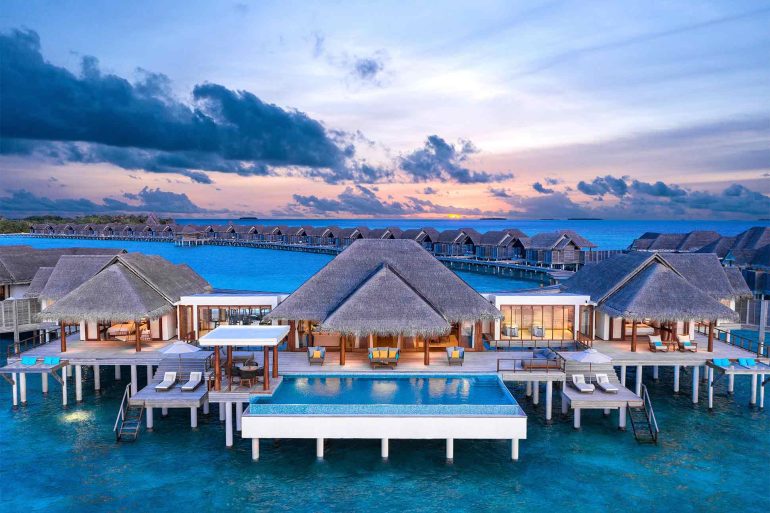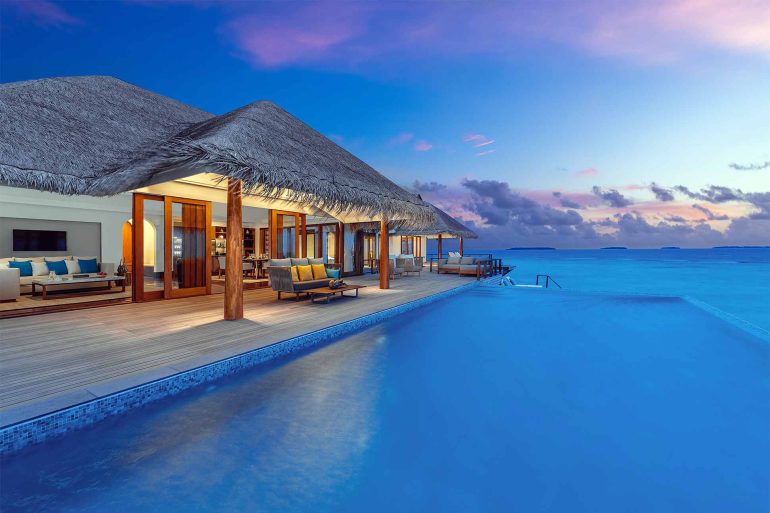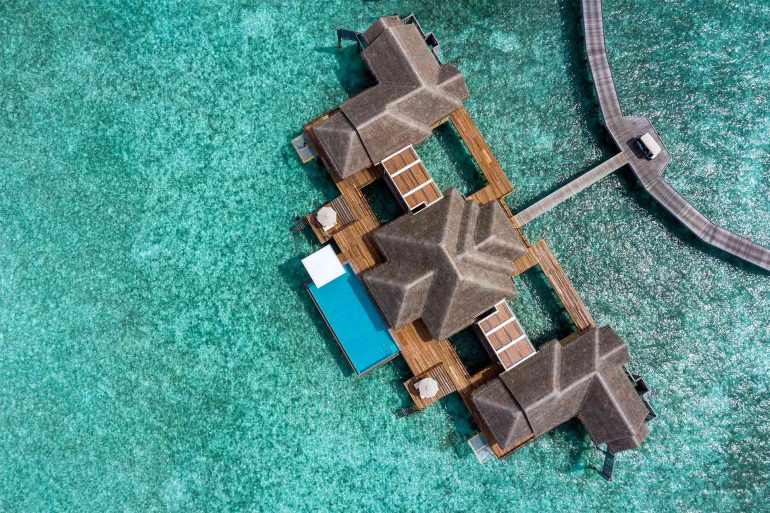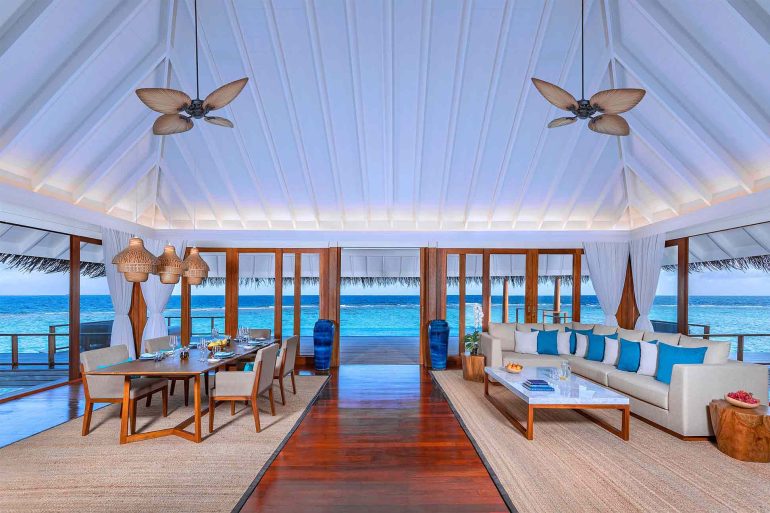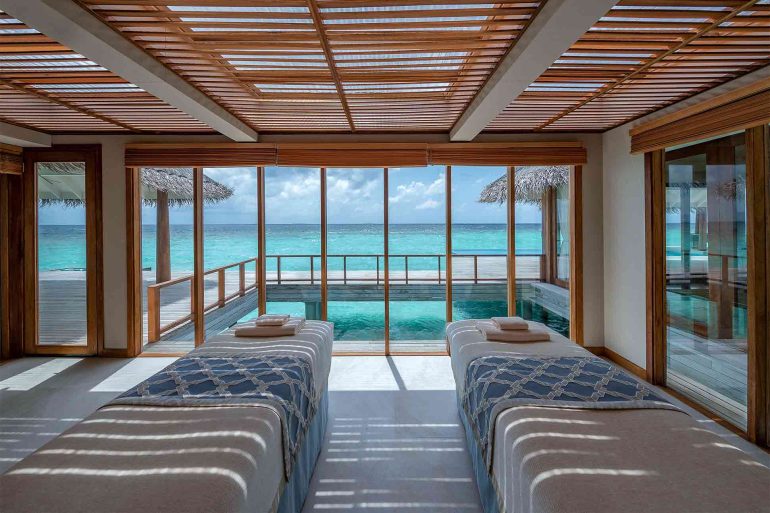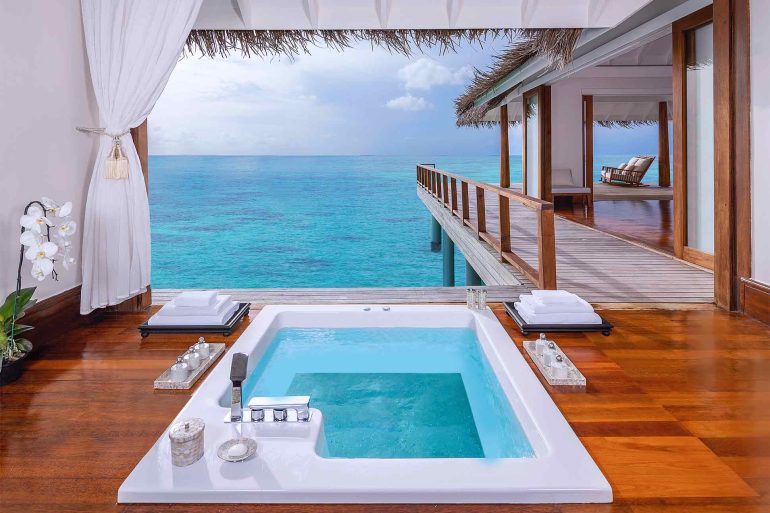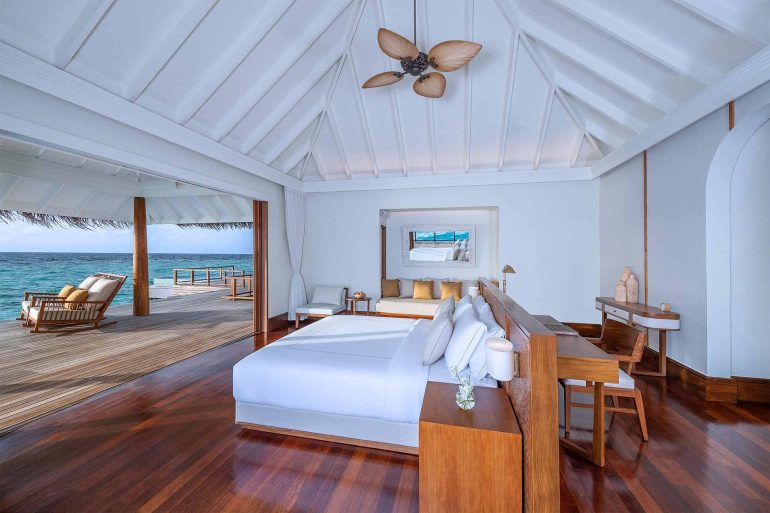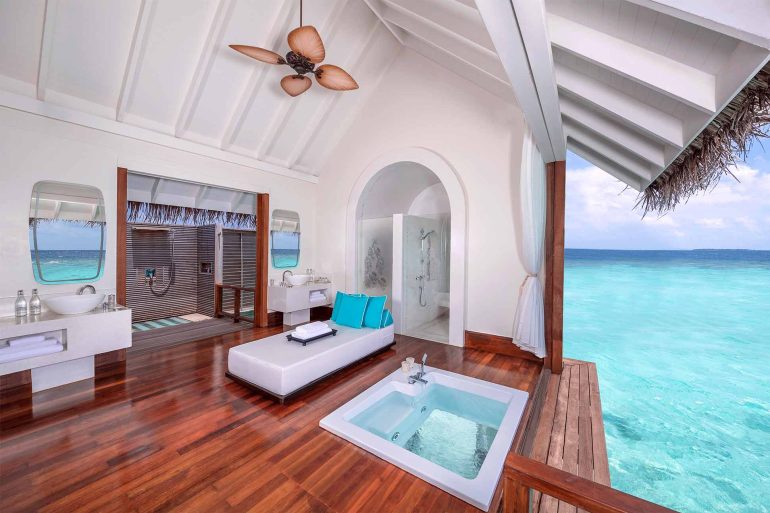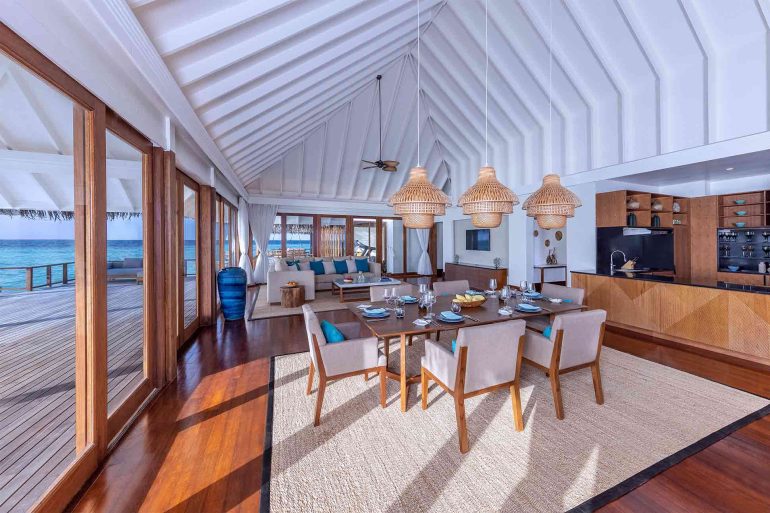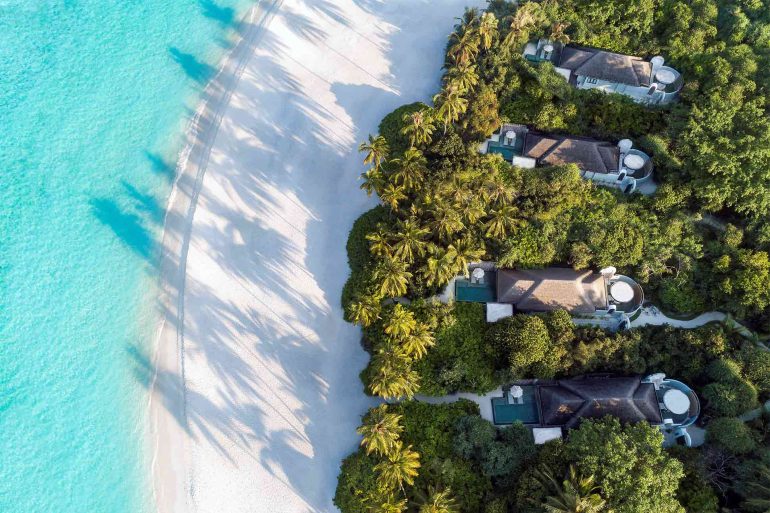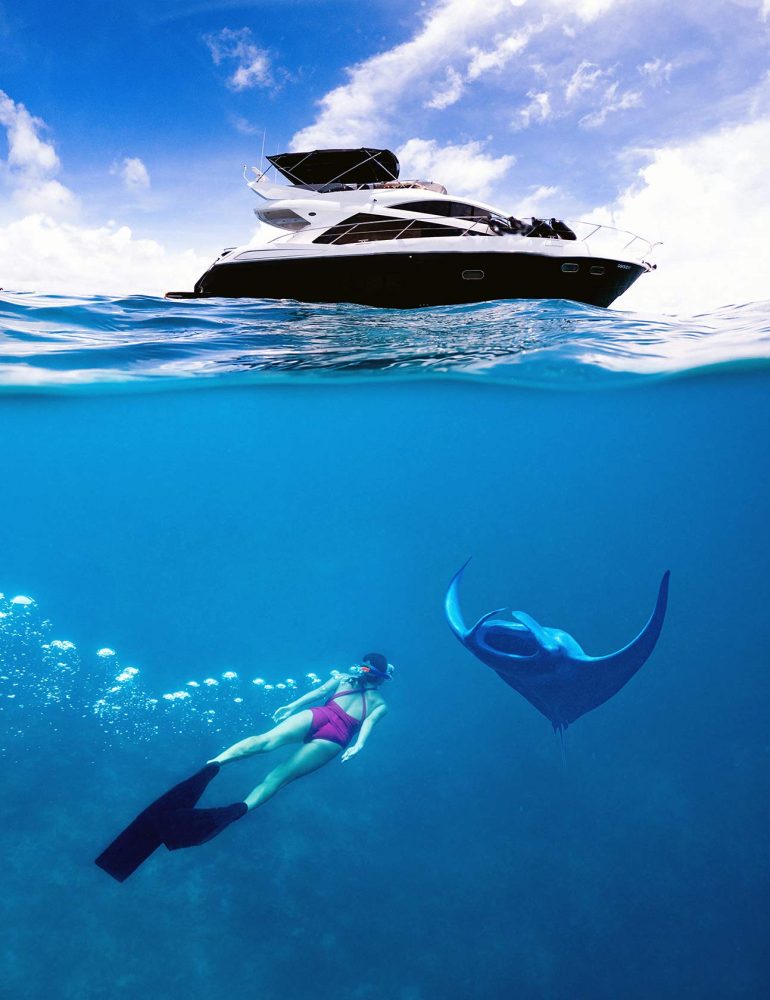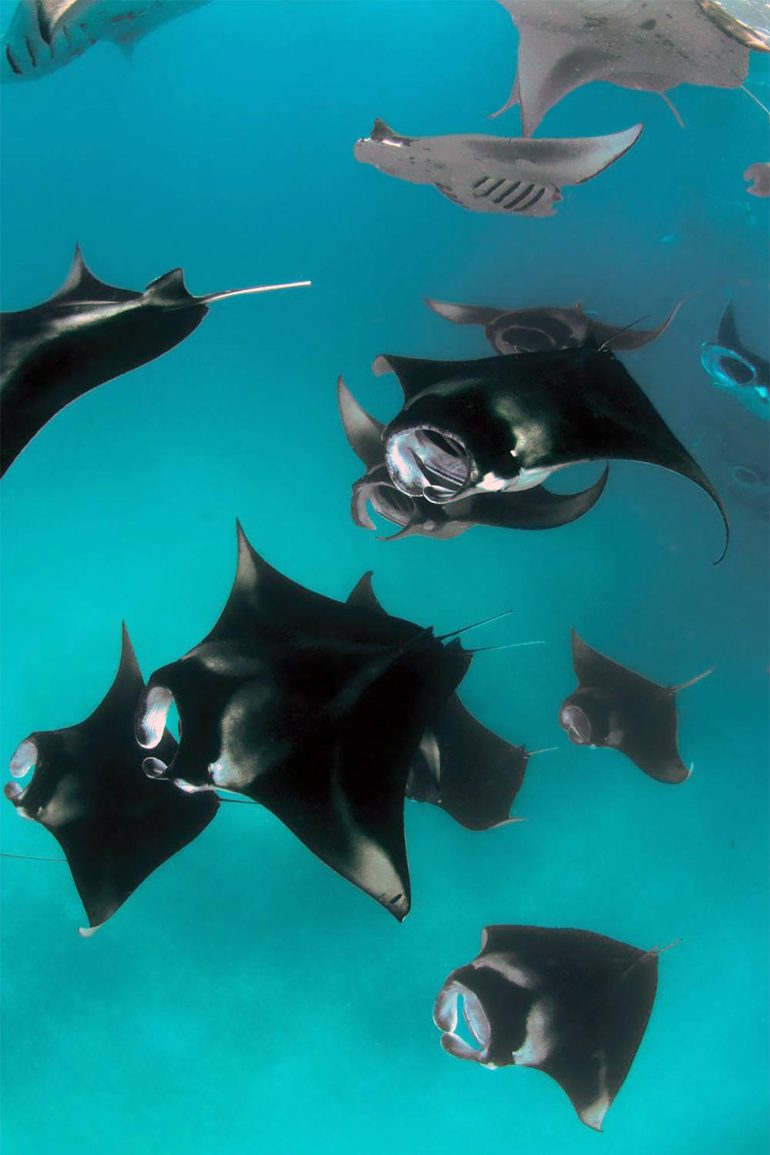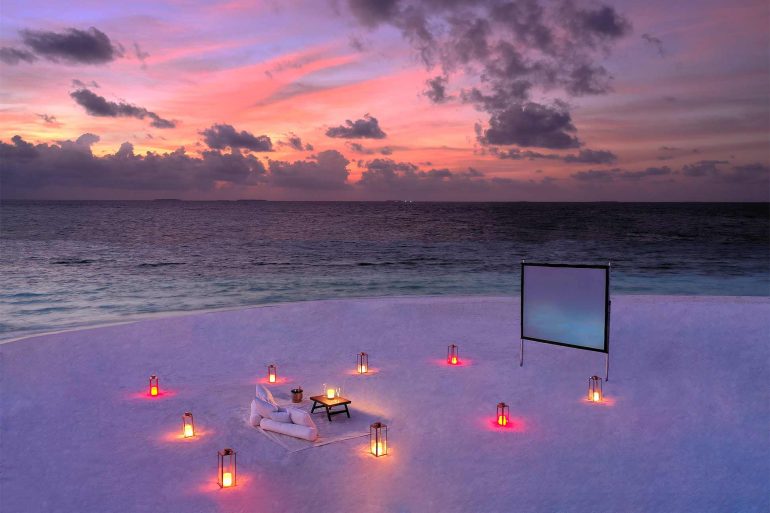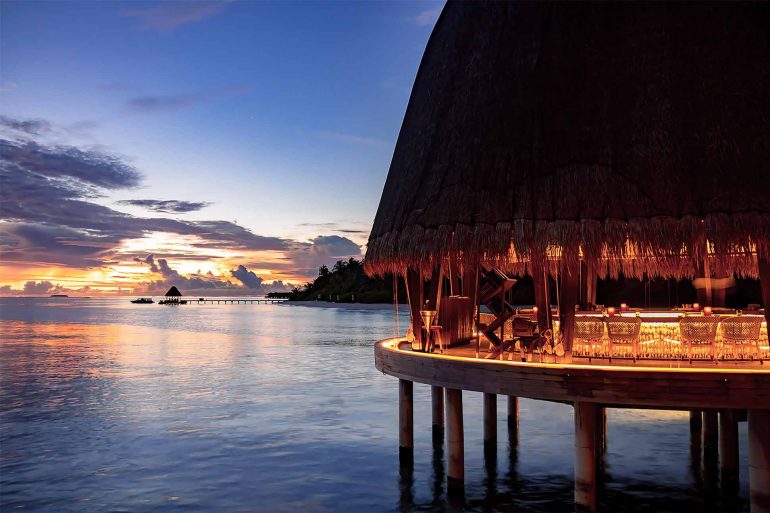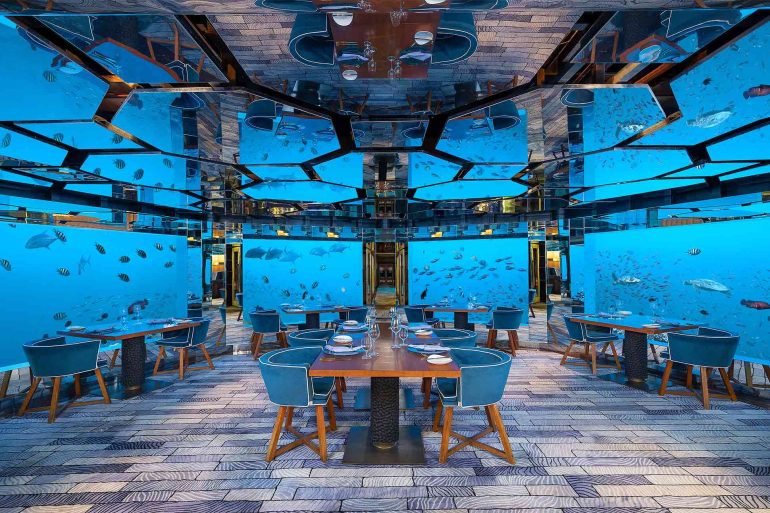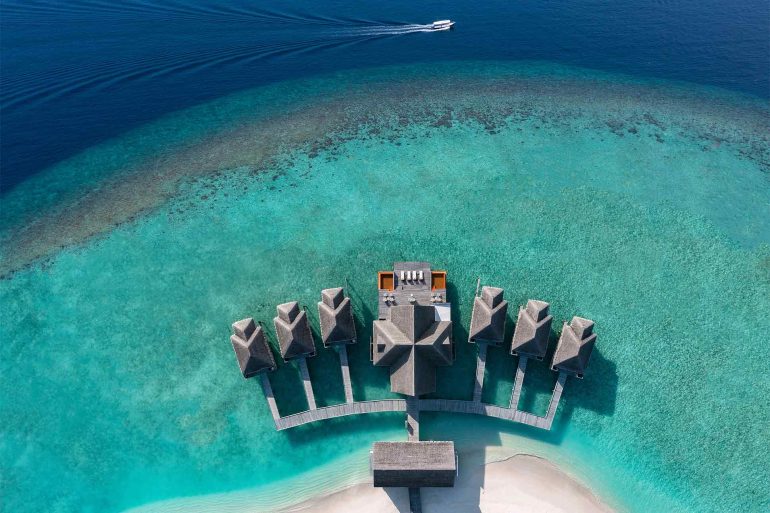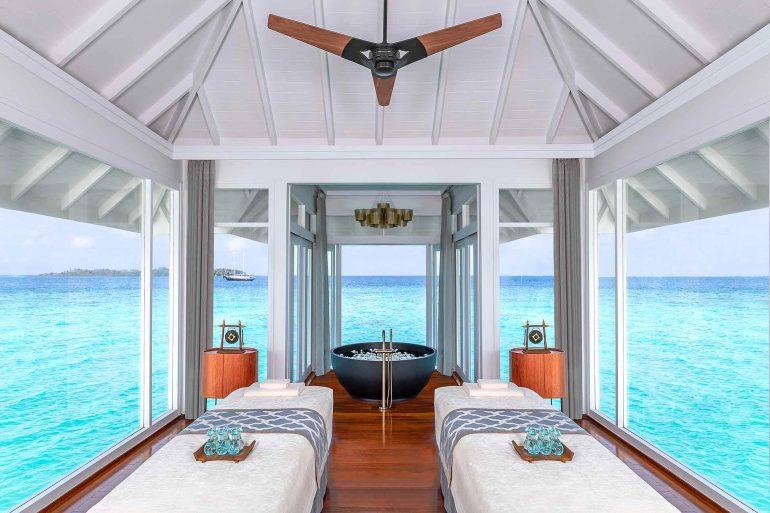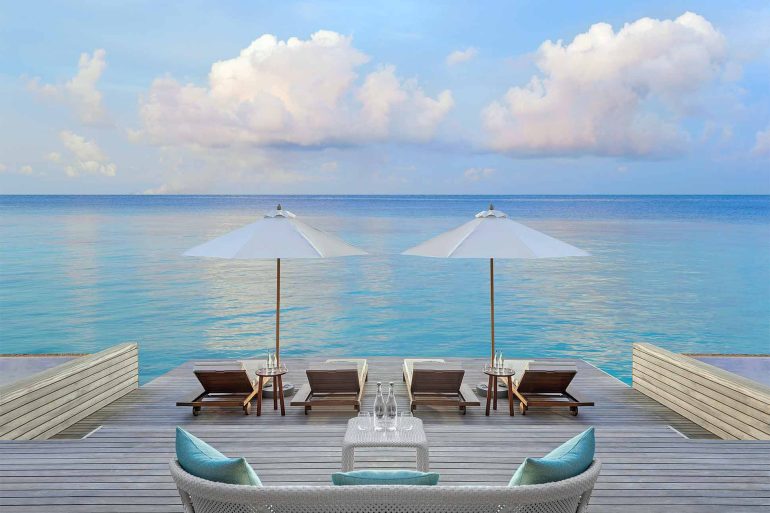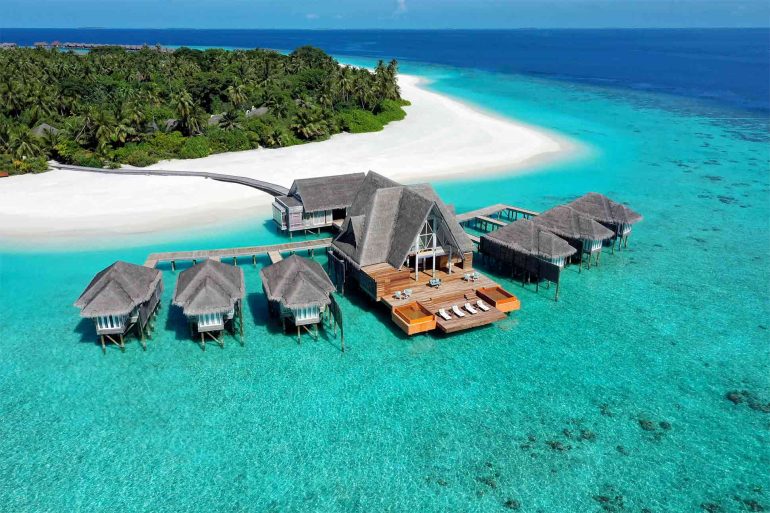Set in a turquoise lagoon surrounded by the sapphire-blue ocean, the luxury resort of Anantara Kihavah Maldives Villas rises up like a mirage from a private island in the Indian Ocean. For centuries, traders sailing to the Far East sought shelter in lush paradises such as this, as they navigated their way from archipelago to archipelago by the stars. Today, visitors to the hotel gather at sunset for cocktails in the Sky bar. From the overwater observatory there, they can watch the twilight tapestry unfold. Then it’s on to dinner in the resort’s underwater restaurant, where the forces of nature can continue to dazzle their imaginations.
On 14 February 1990, the Voyager 1 space probe was ordered to rotate its camera by 180° to take one last picture of Earth before exiting our solar system. The resulting image, taken some 3.7 billion miles from home, quite literally shows our planet in a new light: there hangs Earth, suspended in the reflection of a sunbeam in the camera’s lens, against the cold emptiness of space. Christened ‘Pale Blue Dot’, the strangely poignant photograph is all we can think of as we gaze at the stars from the Anantara Kihavah Maldives Villas’ overwater observatory, the only one in the islands.
It wasn’t just anyone who requested the picture be taken. Rather, it was Carl Sagan, author, astronomer and presenter of the 1980 hit series Cosmos: A Personal Voyage. Sagan was so smitten with the image, he named a book after it. And a few short paragraphs from said book, in which the scientist philosophises about the photo, rose to fame in the 90s: they were printed on everything from T-shirts to posters and mouse pads. These days, Sagan’s musings on the pale blue dot orbit mostly around YouTube (where they’ve gained some 5.5 million views via a three-minute video).
As we lie down on a large, circular sofa beneath the black canopy of eternity, they feel strikingly present. We’ve come to study the night sky after dining on the beach, and our designated ‘sky guru’ colours the experience with some introductory, yet mind-boggling facts about the universe.
‘This star right here’, he says, pointing a green laser towards a sun so distant, it all but disappears when you look directly at it, ‘is some 2,300 lightyears away. That means the light you’re seeing right now has travelled for 2,300 years to reach your eyes’.
It’s no exaggeration to say that to gaze at the night sky is to look at infinity, and each star we spot is a mere letter in a word in a sentence on a page in a book that forms just part of the encyclopaedia of the universe. In the small observatory just a few steps away, we study faraway galaxies from the womb-like comfort of pitch-black darkness, taking turns to feel our way towards a telescope. Our sky guru guides us through our swim among the stars, rotating and focusing the research-grade Meade instrument to reveal suns, clusters and nebulae that are aeons from Earth.
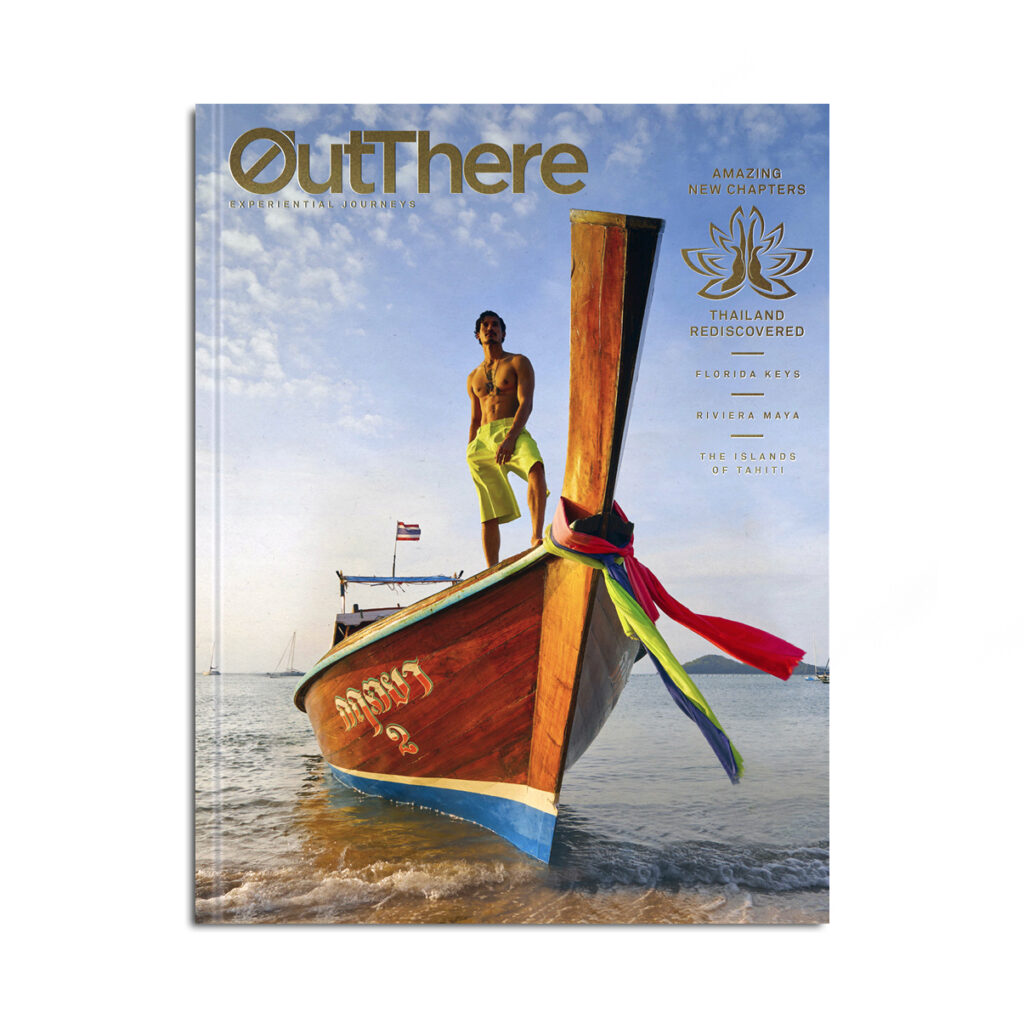
This story first appeared in The Thailand Rediscovered Issue, available in print and digital.
Subscribe today or purchase a back copy via our online shop.
Above anything else, the experience invokes a sense of just how small and insignificant the world appears against the backdrop of ever-expanding and all-encompassing space. Our gaze fixed upon the tightly knit celestial fabric of twinkling stars, we feel like a grain of sand washed up on the beach we sank our feet into during dinner. It’s a marvellous sensation. To feel the weight of the world shrink so tremendously, and to grasp one’s own life – and the sorrows that come with it – in the context of the cosmos, would bestow a sense of inner calm upon anyone. After all, looking at the bigger picture, it would be foolish to stress over anything while on this tiny island on a pale blue dot.
Not that stress is ever on the agenda at Anantara Kihavah Maldives Villas. The 80-villa resort in the UNESCO Biosphere Reserve of the Baa Atoll promises a quintessential island-life experience. It begins the moment we walk down the arrival pier, when the staff sing, clap and drum as we’re handed a young coconut (a ‘kihavah’) to welcome us. Enthusiasm rushing to our heads, we ask Ismail, our personal villa host, who’s keen to indulge our every whim during our stay, for a golf-cart tour around the resort. There’s plenty to discover between the thick foliage of mango and papaya trees, and the views from the island’s narrow, winding jungle paths reveal an interior straight out of Jurassic Park – wild, ample, alive.
As we drive on to the O-shaped pier that leads to the hotel’s overwater residences, we’re greeted by a dramatic change of scenery. The size of everything is astonishing, and the turquoise sea in the centre of this vast, ellipse-shaped walkway built on an underwater sandbank fulfils a coliseum-like function for the villas constructed around it (just wait for something big to swim across the shallow waters, and you’ll see). Our personal abode is at the very end of the pier. At 1,500 square metres, The Residence ranks as the world’s largest two-bedroom overwater villa, which goes some way in explaining why the guests who checked out just a few hours before our arrival are members of an Emirati royal family.
Under its Kajan-thatched, Maldivian-palm roof, this most elaborate of villas features everything from a private gym, a couples massage room, walk-in wardrobes, a sea-view swing the size of a double bed, stairs plunging directly into the sea and a Sukabumi-stone-tiled infinity pool offering views of what looks not unlike the edge of the world. The furnishings are inspired by the ingenuity of nature and include rattan bedheads, petal-shaped fans and woven lampshades. They bring the outside in while adding a barefoot-luxury element to the hotel’s polished interiors. Simultaneously, the Anantara Kihavah Maldives Villas capitalises on the radiant shades of blue surrounding The Residence on each side with floor-to-ceiling windows throughout, a glass-bottom Jacuzzi and windowpanes in the floor beneath our outdoor shower as well as in front of our high-tech Japanese loo (draw your own conclusions).
“In this blissful isolation, we look not merely around, but above, towards the sky, for the first time in ages. The Earth is no doubt minuscule when seen from space, and that’s a great relief at times of worry. But it’s also the only place we know so far to support life.”
Socialising with fellow guests is easy, thanks to the many activities on offer. The general manager, a Scotsman named Ross, invites guests to join him on a daily three-mile run around the island (it’s voluntary – phew). Amazingly, there’s also a Muay Thai boxing ring, for those who can’t sit still. We make for the resort’s overwater spa instead, home to IV treatments, saunas, plunge pools and a fully equipped pampering salon that’s heaven-sent after a turtle snorkelling tour with Tom, the property’s marine biologist. He’s passionate about the conservation of the local coral reefs; that much is clear right away. In the water, Tom points out the hiding places of dormant sharks and identifies any species of fish within seconds.
‘Those lunar fusiliers are just incredible,’ he says as a perfectly synchronised shoal of electrifying blue fish shoots up from the depths below our flippers.
Guests keen on observing marine life without getting their toes wet can do so from Sea, the hotel’s underwater restaurant. Dining here is an experience nonpareil and we’re in awe each time a graceful nurse shark glides past the glass walls, mere feet from our table. Sommelier Gasim Ibrahim – along with the $2 million collection of bottles in the adjoining wine cellar – adds a real buzz to every meal, making it a thrilling place for dinner (the big fish only come out at night). The restaurant does, however, have some way to go in streamlining its frustratingly clumsy breakfast-by-design experience. Luckily, with five more eateries and bars across the resort, we don’t go hungry.
In the end, what makes our stay in The Residence so memorable is its hideaway-within-a-hideaway status, providing perfect privacy on all fronts. From the enormous outdoor deck, no other villas are visible, and neither is the island itself. The nearest bodies of land are glued to a faraway horizon set ablaze in the evenings by the spectacle of a near-equatorial sunset. Each night, we decant a bottle of Riesling from our wine fridge and lose ourselves in the show.
It feels as though we’re completely alone in a palace in the middle of the Indian Ocean and, with meals and massage therapists a mere WhatsApp message away, we could spend a lifetime in our villa without ever seeing another guest. In this blissful isolation, we look not merely around, but above, towards the sky, for the first time in ages. The Earth is no doubt minuscule when seen from space, and that’s a great relief at times of worry. But it’s also the only place we know so far to support life; a point Carl Sagan certainly drove home in his musings.
One night, as we sit on our deck after the sunset, an enormous stingray glides into view in the atmospherically lit waters beneath our villa. Our jaws drop to the floor. The animal pops in and out of sight, disappearing between the stilts the villa sits on, only to resurface seconds later. After some ten minutes, it vanishes into the inky waters of the night, never to be seen again. From 3.7 billion miles away, the scene would look rather unimpressive. But from where we are, on a tiny island in the middle of an ocean on the single pixel called Pale Blue Dot in a photograph from the 1990s, it’s a poignant reminder of one simple truth: how extraordinarily lucky we are to call this dot our home.
Photography courtesy of Anantara Hotels, Resorts & Spas
Anantara Kihavah Maldives
At OutThere, we believe in boundless travel. But we understand that some destinations can pose challenges to travellers that complicate visiting them. We advise all visitors to inform themselves about local legislation and customs, and to work with a trusted travel provider in order to ensure a safe and pleasant holiday.


